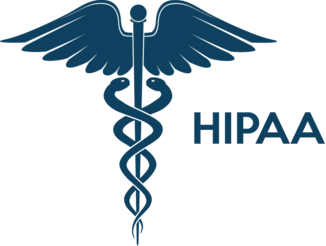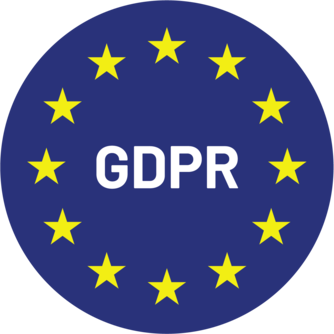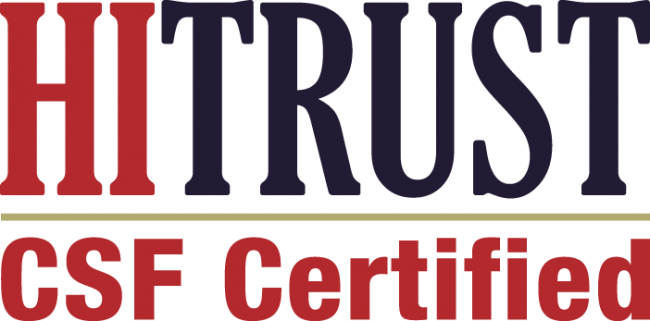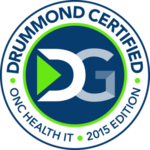Chronic Obstructive Pulmonary Disease (COPD) affects over 16 million Americans and is the third leading cause of death in the United States. Managing this progressive respiratory condition requires continuous monitoring, timely interventions, and coordinated care between patients and healthcare providers. Remote patient monitoring (RPM) has emerged as a transformative approach to COPD management, offering improved outcomes while reducing healthcare costs and hospital readmissions.
Understanding COPD and Its Management Challenges
COPD encompasses a group of lung diseases, including emphysema and chronic bronchitis, that cause airflow obstruction and breathing difficulties. The condition is characterized by progressive symptoms such as shortness of breath, chronic cough, wheezing, and chest tightness. Traditional COPD management faces several challenges:
- Unpredictable exacerbations that can lead to emergency department visits and hospitalizations
- Medication adherence issues affecting treatment effectiveness
- Limited patient self-monitoring capabilities between clinical visits
- Delayed recognition of symptom deterioration
- High readmission rates following COPD-related hospitalizations
The Role of Remote Patient Monitoring in COPD Care
Remote patient monitoring transforms COPD management by enabling continuous surveillance of patient health status outside traditional clinical settings. This technology-driven approach allows healthcare providers to:
1. Early Detection of Exacerbations
RPM systems continuously track vital signs, oxygen saturation levels, and symptom patterns, enabling early identification of COPD exacerbations before they become severe. This proactive approach can prevent emergency department visits and hospitalizations.
2. Medication Adherence Monitoring
Digital pill dispensers and smart inhalers can track medication usage patterns, sending alerts when patients miss doses or use rescue medications frequently, indicating potential worsening of symptoms.
3. Symptom Tracking and Assessment
Patients can report daily symptoms, activity levels, and quality of life measures through mobile applications or connected devices, providing healthcare teams with comprehensive data for treatment adjustments.
4. Objective Health Metrics
Continuous monitoring of heart rate, blood pressure, weight, and oxygen saturation provides objective data that complements subjective symptom reports, offering a more complete picture of patient health.
CMS Medicare Remote Patient Monitoring Program
The Centers for Medicare & Medicaid Services (CMS) recognized the value of RPM in chronic disease management and established specific billing codes and reimbursement structures for remote monitoring services. The Medicare RPM program provides crucial financial support for healthcare practices implementing these technologies.
Key Features of CMS RPM Reimbursement:
CPT Code 99453 – Remote Patient Monitoring Setup
- Reimbursement: Approximately $19
- Covers initial setup and patient education on device use
- Billable once per episode of care
CPT Code 99454 – Device Supply and Data Collection
- Reimbursement: Approximately $64 per month
- Covers 16 or more days of physiologic monitoring data collection
- Includes device supply and technical support
CPT Code 99457 – Clinical Assessment and Management
- Reimbursement: Approximately $52 for the first 20 minutes
- Covers initial clinical assessment and care management services
- Requires direct patient interaction
CPT Code 99458 – Additional Clinical Time
- Reimbursement: Approximately $43 for each additional 20 minutes
- Used when clinical assessment exceeds the initial 20-minute period
Medicare RPM Eligibility Requirements:
- Patients must have a chronic condition requiring monitoring
- Devices must be FDA-approved or cleared
- Data collection must occur for at least 16 days per month
- Clinical staff must spend at least 20 minutes per month on care management
- Patients must provide consent for RPM services
Clinical Benefits of RPM for COPD Patients
Research demonstrates significant improvements in COPD outcomes through remote monitoring implementation:
Reduced Hospitalizations
Studies show that COPD patients enrolled in RPM programs experience 20-40% fewer hospital admissions compared to traditional care models. Early intervention based on remote monitoring data prevents minor symptoms from escalating into severe exacerbations.
Improved Quality of Life
Continuous monitoring provides patients with greater confidence in managing their condition, reducing anxiety about symptom changes, and enabling more active participation in daily activities.
Enhanced Medication Adherence
RPM systems with medication tracking capabilities have demonstrated 15-25% improvements in medication adherence rates, leading to better symptom control and reduced exacerbation frequency.
Better Patient Engagement
Interactive monitoring platforms encourage patients to take active roles in their care, leading to improved self-management skills and treatment compliance.
Implementation Strategies for Healthcare Practices
Successfully implementing RPM for COPD patients requires strategic planning and appropriate technology selection:
1. Patient Selection and Stratification
Identify high-risk COPD patients who would benefit most from remote monitoring, including those with:
- Frequent exacerbations or hospitalizations
- Poor medication adherence
- Limited access to healthcare facilities
- Comorbid conditions requiring complex management
2. Technology Integration
Choose RPM platforms that integrate seamlessly with existing electronic health records (EHR) systems and clinical workflows to minimize disruption and maximize efficiency.
3. Staff Training and Workflow Development
Develop standardized protocols for responding to RPM alerts, assign dedicated staff for monitoring duties, and establish clear escalation procedures for concerning trends.
4. Patient Education and Support
Provide comprehensive training on device usage, data interpretation, and when to seek immediate medical attention to ensure successful program participation.
How HealthViewX Empowers COPD Management
HealthViewX offers a comprehensive remote patient monitoring solution specifically designed to address the unique challenges of COPD management. The platform provides healthcare practices with powerful tools to improve patient outcomes while maximizing reimbursement opportunities.
Advanced Monitoring Capabilities
HealthViewX’s integrated platform supports multiple FDA-approved devices for tracking vital signs, oxygen saturation, weight, and other relevant health metrics. The system automatically aggregates data from various sources, providing clinicians with a comprehensive view of patient health status.
Intelligent Alert System
The platform’s sophisticated algorithms analyze patient data in real time, generating actionable alerts when concerning trends are detected. This enables proactive interventions before symptoms worsen, reducing emergency department visits and hospitalizations.
Streamlined Clinical Workflows
HealthViewX integrates seamlessly with existing EHR systems, ensuring that RPM data flows directly into patient records without disrupting established workflows. Clinicians can access comprehensive patient dashboards, trend reports, and customizable alerts through a single interface.
Comprehensive Care Management Tools
The platform includes features for medication adherence tracking, symptom assessment questionnaires, and patient education resources, enabling holistic COPD management beyond basic vital sign monitoring.
Revenue Optimization
HealthViewX provides built-in billing support for CMS RPM codes, helping practices maximize reimbursement while ensuring compliance with Medicare requirements. The platform automatically tracks billable activities and generates documentation needed for successful claims submission.
Patient Engagement Features
User-friendly mobile applications and patient portals encourage active participation in care management, providing educational resources, medication reminders, and direct communication channels with healthcare teams.
Best Practices for COPD RPM Implementation
1. Develop Clear Protocols
Establish standardized procedures for device distribution, data review, alert response, and patient communication to ensure consistent care delivery across all enrolled patients.
2. Focus on High-Risk Patients
Prioritize enrollment of patients with frequent exacerbations, recent hospitalizations, or poor baseline symptom control to maximize clinical impact and demonstrate program value.
3. Ensure Adequate Staffing
Allocate sufficient clinical staff time for RPM program management, including daily data review, patient communication, and care coordination activities.
4. Measure and Track Outcomes
Implement key performance indicators (KPIs) to monitor program effectiveness, including readmission rates, patient satisfaction scores, and clinical quality measures.
5. Maintain Regular Communication
Schedule regular check-ins with enrolled patients to address concerns, provide education, and ensure continued engagement with the monitoring program.
Future Directions in COPD Remote Monitoring
The field of remote patient monitoring continues to evolve, with emerging technologies promising even greater improvements in COPD management:
Wearable Technology Integration
Next-generation wearable devices will provide continuous, noninvasive monitoring of respiratory parameters, activity levels, and sleep quality, offering more comprehensive health insights.
Telemedicine Integration
Combining RPM with virtual consultations will create seamless care experiences, allowing for immediate clinical responses to concerning trends without requiring in-person visits.
Social Determinants of Health
Future platforms will incorporate social and environmental factors that impact COPD outcomes, enabling more holistic care approaches that address the root causes of health disparities.
Conclusion
Remote patient monitoring represents a paradigm shift in COPD management, offering the potential to significantly improve patient outcomes while reducing healthcare costs. The CMS Medicare RPM program provides financial incentives that make implementation feasible for healthcare practices of all sizes. By leveraging comprehensive platforms like HealthViewX, practices can successfully deploy RPM programs that benefit both patients and providers.
The key to successful COPD RPM implementation lies in thoughtful patient selection, appropriate technology choices, and commitment to ongoing program optimization. As healthcare continues to evolve toward value-based care models, remote monitoring will become increasingly essential for effectively managing chronic conditions, such as COPD.
Healthcare practices that embrace remote patient monitoring today will be better positioned to deliver high-quality, cost-effective care while improving the lives of patients living with COPD. The combination of proven clinical benefits, favorable reimbursement structures, and advanced technology platforms creates an unprecedented opportunity to transform COPD care delivery for the better.



